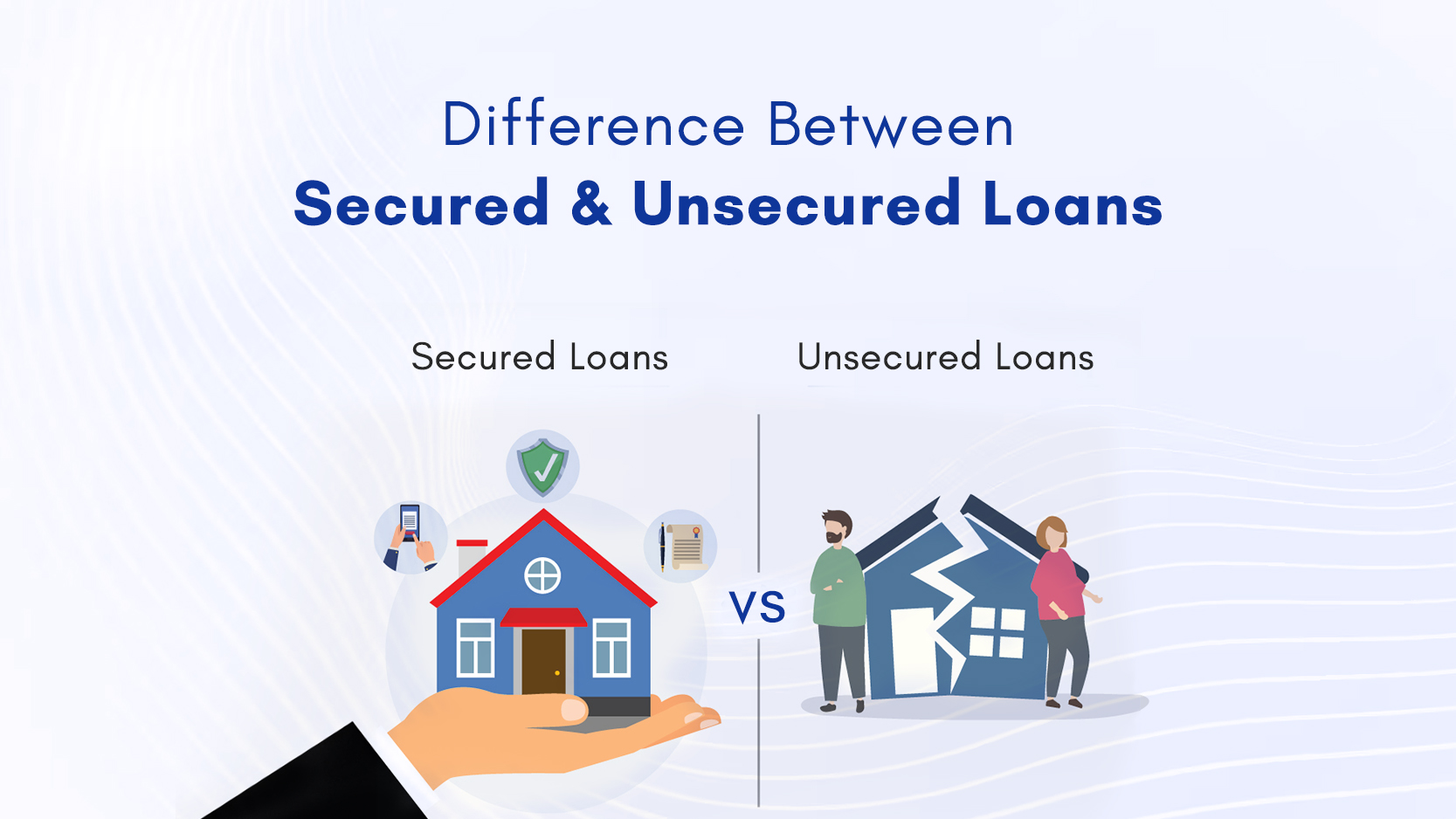When it comes to borrowing money, understanding the types of loans available can make a significant difference in managing your finances effectively. Among the most common loan options are secured loans and unsecured loans. Each comes with its unique features, advantages, and risks. This article explores the key differences between these two types of loans, helping you make informed financial decisions.
What Are Secured Loans?
A secured loan is backed by collateral, meaning you pledge an asset, such as your home, car, or savings, to guarantee the loan. If you fail to repay the loan, the lender has the right to seize the asset to recover their money.
Common Examples of Secured Loans:
- Mortgages: Your home acts as collateral.
- Auto Loans: The vehicle serves as the security for the loan.
- Home Equity Loans: Your property is used as collateral.
Benefits of Secured Loans:
- Lower Interest Rates: Because the lender’s risk is reduced, secured loans often come with lower interest rates.
- Higher Borrowing Limits: Borrowers can typically access larger amounts.
- Longer Repayment Terms: Secured loans often have more flexible repayment periods.
Risks of Secured Loans:
- Asset Seizure: Failing to repay could result in the loss of the collateral.
- Complex Application Process: Requires appraisals and documentation for the pledged asset.
What Are Unsecured Loans?
An unsecured loan, on the other hand, does not require collateral. Lenders assess your creditworthiness and income to determine your eligibility. Since there is no asset backing the loan, the lender assumes a higher risk, often resulting in stricter requirements.
Common Examples of Unsecured Loans:
- Personal Loans: Used for various purposes like debt consolidation or emergencies.
- Credit Cards: Technically a form of unsecured revolving credit.
- Student Loans: Federal student loans often fall under this category.
Benefits of Unsecured Loans:
- No Risk to Assets: Your property isn’t at stake if you default.
- Simpler Application Process: Often requires less paperwork compared to secured loans.
- Versatile Usage: Funds can be used for a wide range of needs.
Risks of Unsecured Loans:
- Higher Interest Rates: To compensate for the lack of collateral, lenders charge higher rates.
- Lower Loan Limits: Borrowing limits are generally smaller.
- Credit Dependency: Approval heavily relies on your credit score and financial history.
Key Differences Between Secured and Unsecured Loans
| Feature | Secured Loans | Unsecured Loans |
|---|---|---|
| Collateral | Required | Not Required |
| Interest Rates | Lower | Higher |
| Loan Amount | Higher | Lower |
| Risk to Borrower | Loss of collateral | No asset risk |
How to Choose the Right Loan?
- Evaluate Your Needs: If you need a large amount for a long-term goal (like buying a house), a secured loan may be ideal.
- Consider Your Credit Score: If you have excellent credit, you might qualify for competitive rates on unsecured loans.
- Assess Your Risk Tolerance: Are you comfortable pledging an asset? If not, unsecured loans may be safer.
- Compare Offers: Always shop around and compare terms from multiple lenders.
Also Read : Refinance Student Loans: Top Guide for 2024
Conclusion
Choosing between a secured and unsecured loan depends on your financial goals, creditworthiness, and risk tolerance. Secured loans offer lower rates and higher amounts but come with the risk of losing your collateral. Unsecured loans, while simpler and safer for your assets, often carry higher interest rates and stricter requirements.
By understanding these key differences, you can make informed decisions and select the loan that best suits your financial needs. Always consult a financial advisor or trusted expert to ensure you’re making the best choice for your situation.
Hello friends, my name is Santanu Ray, I am a content writer. I write tech related content in this website Newslok 24.
I have more than 3 years of experience in writing blogs and I hope that you will like the information in our blog.
Stay connected to our site for latest Updates.



